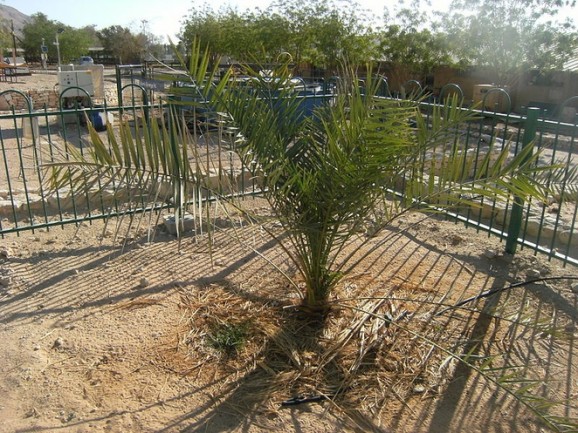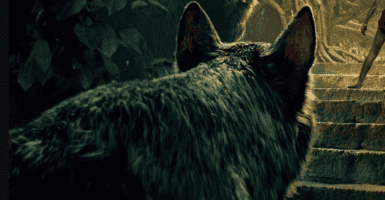Extinct Tree Grows From Ancient Seeds
This article is more than 2 years old
 “Life finds a way,” says the prophetic Dr. Ian Malcolm, played by Jeff Goldblum in Jurassic Park. He was not only right about the dinosaurs breeding, but he’s right about nature in general—at least, when humans aren’t irrevocably screwing it up. The latest example of life finding a way is the Judean date palm tree, which, though it was at one time was widespread throughout the Middle East, has been extinct for centuries.
“Life finds a way,” says the prophetic Dr. Ian Malcolm, played by Jeff Goldblum in Jurassic Park. He was not only right about the dinosaurs breeding, but he’s right about nature in general—at least, when humans aren’t irrevocably screwing it up. The latest example of life finding a way is the Judean date palm tree, which, though it was at one time was widespread throughout the Middle East, has been extinct for centuries.
As far back as 3,000 years ago, date palms offered a bit of respite from the harsh sun, as well as some tasty fruit, which may explain why they’re mentioned in the Old Testament: “The righteous himself will blossom forth as a palm tree does” (Psalm 92). The city of Jericho prospered largely because of the growth of these trees. People also thought the they had medical properties, could increase one’s lifespan, and could boost one’s libido. No wonder they loved these trees so much!
By the time of the Roman invasion, Judean date palms comprised huge forests and were a staple of the economy. But when the Romans destroyed the Second Temple in Jerusalem in 70 AD, the growing and selling of dates stopped, and in an attempt to destroy the Jewish economy, the Romans wiped out the trees. Way to go, Romans. By 500 AD, the Judean palm was extinct. Then, life found a way.
In the 1960s, archaeologists excavated the Israeli palace of Herod the Great and found, among other things, an old clay jar full of seeds. Naturally, they stuck the seeds in a drawer at the Bar-Ilan University in Tel Aviv. It wasn’t until 2005 that botanist Elaine Solowey, known for helping trees thrive in Israeli’s Negev Desert, decided to see if she could make the seeds grow. Even though she assumed it wasn’t possible, she did research into seed revitalization and decided to give it a go, soaking the seeds in hot water, nutrients, and a seaweed-based fertilizer.
It took a couple months, but the seeds began to sprout. Initially, the shoots looked sickly, and Solowey didn’t hold out much hope for the plant’s survival. But after a few months of worry and stress, things started looking pretty good. Researchers are now trying to replicate the experiment to see if Solowey’s techniques will work on other ancient seeds, or whether this was a fortunate fluke.
Solowey’s ancient seed is, to our knowledge, the oldest ever to grow. The plant, appropriately called Methuselah (the oldest living person, according to the Hebrew Bible) is still alive—it even flowered in 2011. It hasn’t grown any fruit, though, which may be more of a gender thing than an age thing. Botanists believe that crossbreeding it with another type of date tree might be the best bet. Regardless, props to Solowey and to the incredibly resilient Judean date tree for finding a way, no amber required.












